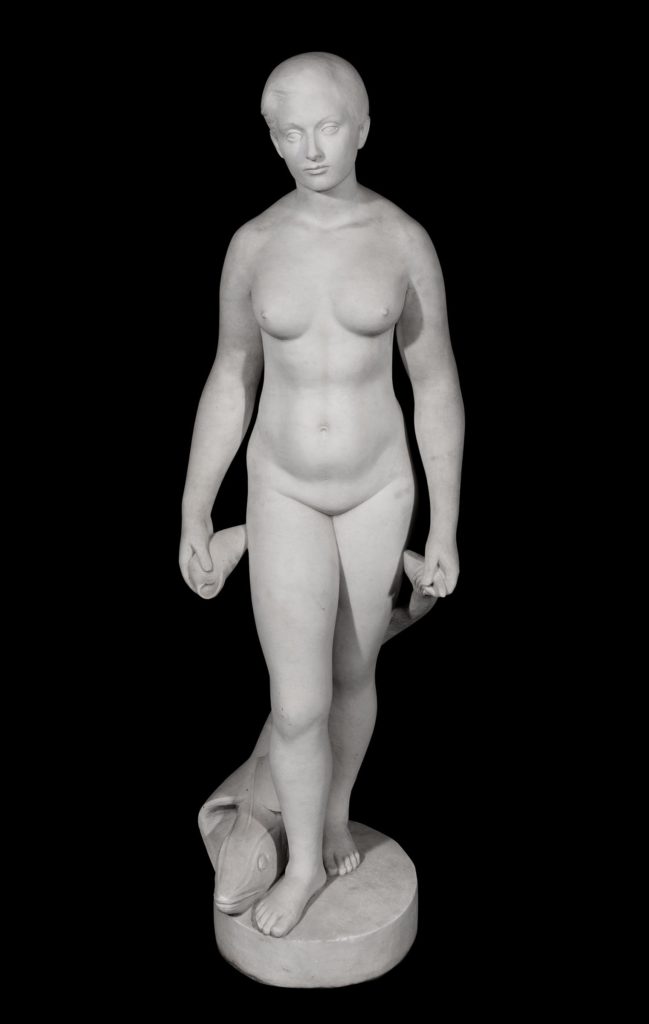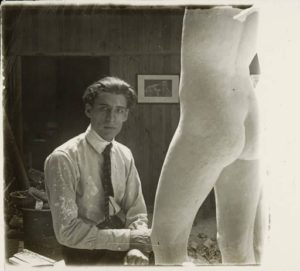Joan Rebull's archaic modernity
Salvador Dalí directed to Joan Rebull one of the greatest praises that the surrealist genius ever dedicated to one of his contemporaries, referring to him as “the greatest sculptor in the world.” Belonging to the so-called Generation of 17, educated in the Noucentisme, he promoted, together with his contemporaries, the renewal of expressive models more in line with the new concerns of his time.
As a sample of his artistic legacy Setdart presents “allegory to the Mediterranean” (lot 35185438) a monumental marble sculpture in which Rebull reveals to us what were the two cornerstones of his production: primitivism and new realism.


Since his adolescence, Rebull showed evident signs of an innate talent, which would be recognized when he was only 15 years old, rising as the winner of the contest organized by the San José de Reus Workers’ Board. After a brief stay in Barcelona, his eagerness to learn led him to Paris, the city where he settled between 1927 and 1929. Throughout this period he was able to frequent the fervent Parisian artistic environment, coming into contact, through Apeles Fenosa, with great figures of the avant-garde such as Pablo Picasso or Paul Eluard. It was then that a deep feeling of modernity awakened in him that, breaking with the artistic sensibility of the most immediate past, would mark a turning point in his career.
However, the roots of the Noucentista heritage manifested itself in an imperishable way in each of his creations, originated under the influence of the precepts that Torres García promulgated in his manifesto “ An enemy of the poor “ in 1917. The reality that Rebull was looking for was not that of tangible and physical appearances, but that which hides behind what we see. For this and as Torres García did, Rebull takes us to the most remote past of Mediterranean civilization, taking as a model the primitive and archaic art of Mesopotamia, Egypt and Greece. This return to what was the cradle of our culture responds to the impetuous will to recover and claim the essence of our own identity that, at that time, was promoted from the cultural and political sphere by various European territories.
In this way, the artist from Tarragona gave life to a solid and resounding sculptural type in his volumes that, in its synthetic and austere expressiveness, contained a remarkable symbolic charge, especially latent in infants and female figures like the present one. It is in this balanced combination, at once material and ethereal, renovating and classic, where the modernity resides that the sculptor longed for and managed to achieve. In this sense, the sculpture in tender exemplifies the paradigm of the style that Rebull developed. Inspired by the mythological theme of the Birth of Venus, the artist presents us with an allegorical female figure, whose characteristic hieraticism, purity of forms and delicate modeling, takes us to the immutable essence of our Mediterranean origins.
After an original artistic itinerary that oscillates between synthetic realism, neo-classicism with Noucentist roots and symbolism, the figure of Joan Rebull stands as a bridge between the culture before and after the Spanish civil war. The clear aesthetic and artistic political commitment that he acquired with the sign of his time engraved a deep mark on the evolution of the country’s sculptural practice, which places him as the most outstanding Catalan sculptor of the middle of the last century.


